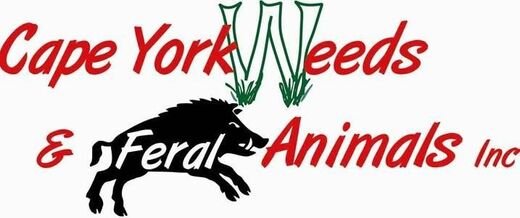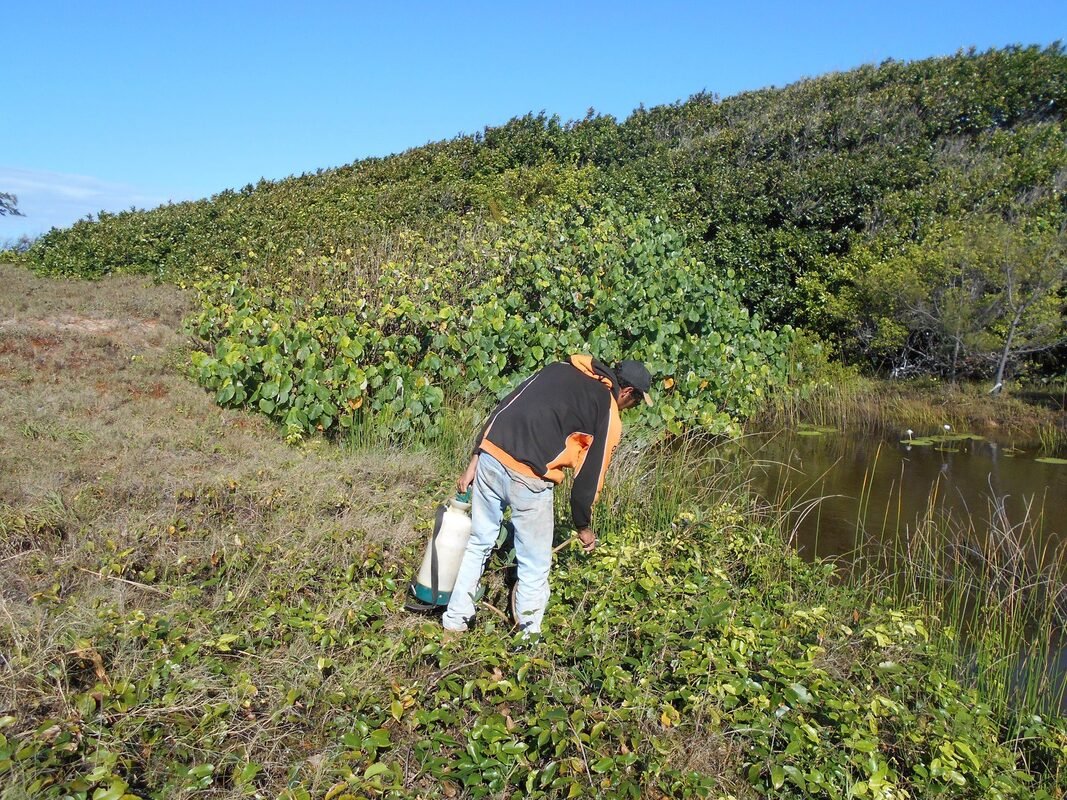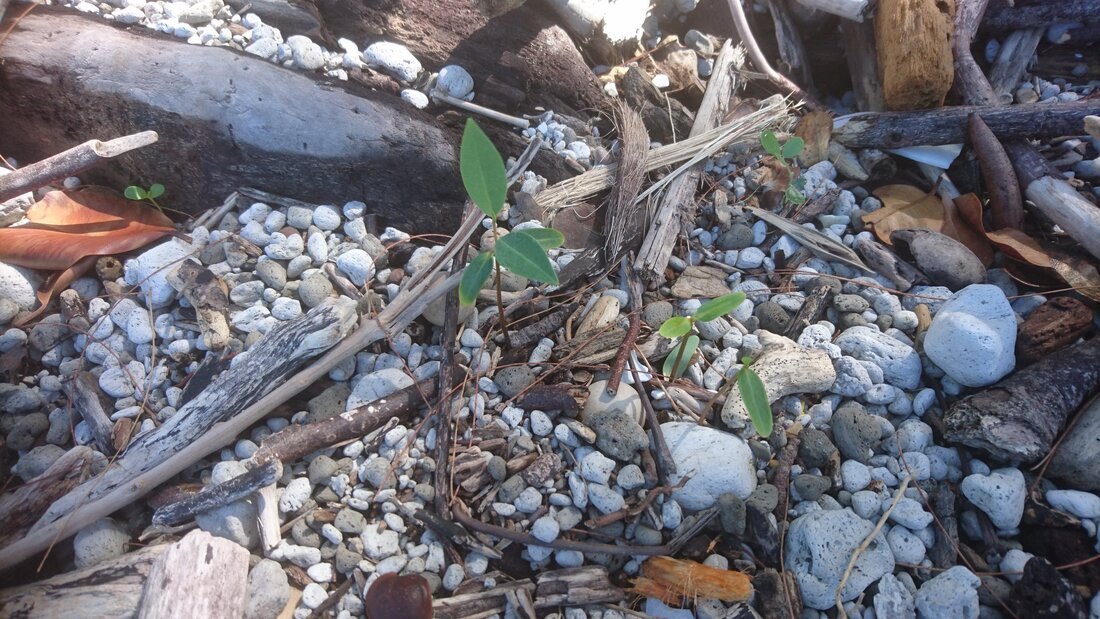CY175 Progress Performance Report
July-2019 | QFPIR2 # - Sub Program 1, Sub Program 2 & Sub Program 3
In partnership with Cape York Natural Resource Management Limited, we have successfully completed our QFPIR2 # - Sub Program 1, Sub Program 2 & Sub Program 3.
We are of course hoping to continue if and when there are resources available. At the moment, we simply don't know.
Sub Program 1 | Landholder Best Management Practice Capacity Building
•Had steering committee meetings held at Cooktown with participating committee members, CYWAFAI_Inc staff and Regional Agricultural Landcare Facilitator, to schedule projects and develop operational works plans
•We have finished all of our fully accredited AC/DC course, which was held from 18 -20 February 2019.
•We have also continued working with the fifteen signed up landholders.
•This has consisted of helping them with their weed control on their properties. We have helped build up tremendous capacity within the landholders.
•As it is very wet, there was no point in trying to do control work on properties where we could not get into the paddocks. It was very boggy in most areas.
•We managed to build the capacity our landholders as it progressively dried out.
•This has provided them with capacity to actually control the declared weeds on their own properties.
•Individual graziers and horticulturists have been commenting on how much better prepared they are to be able to make their weeds and feral animal control more effective.
•They were impressed that it has actually saved them money and has helped make their land more productive.
•We promoted the project through attending several community events.
•We promoted our project at June Discovery Festival Weekend in Cooktown.
•The QFPI Project was also promoted at the Cape York Local Marine Advisory Committee meeting, held on 25 July 2019.
•Promotion was done at the Cape York NRM Board meetings throughout the year.
•We took the took interested people from the Johnstone Research centre to our work sites,to show them the project success and how we have progressed.
We have regularly promoted the project on our social media sites:
Facebook:- www.facebook.com/pages/Cape-York-Weeds-and-Feral-AnimalsInc/805555096154233
Website: - https://cywafainc.weebly.com/
Twitter: - https://twitter.com/cywafa
•Conducted the Steering Committee meeting for the Project via phone hook-up on 31 October 2018.
•By actually working with the landholders, we completed their Property Pest Management Plans.
•We built up the experience and capacity of the landholder to carry out Weeds ID and chemical and non-chemical control methods for the weeds identified as a Priority on each of their Pest Management. This included the Declared Weeds under the Biosecurity Act 2014.
•Before it got too dry, we managed to provide capacity to the rest of the landholders.
•CYWAFA conducted on ground capacity building with Beat and Sasha and late last year, and earlier this year.
• A Property Pest Management Plan Was established with the landholder.
• Weed ID, and weed control was conducted with the landholder.
Major weed species present were: Sickle Pod, Lantana, Bauhinia, and Gamba Grass.
Minor weed species present were: Mossman Burr, Chinese Burr, Sensitive Weed, and Singapore Daisy.
Sub Program 2 | QFPI-Landholder AC/DC Herbicide Training Course Four 18-20 /02/2019
As it has been very wet, and people have been busy with other work, it has not been practical to conduct any more AC/DC courses till now.
•This course is being conducted as a part of the Cape York Weeds and Feral Animals, Incorporated, and cape York NRM Queensland Feral Pest Initiative Project.
•Cape York Weeds and Feral Animals Program are working in conjunction with individual properties as a part of the strategic control of locally declared and other declared weed infestations in the South East Cape York Area. This includes all the productive land areas within Laura Valley, Cooktown, Endeavour Valley, Mt Amos and Rossville.
•The main objective is to strategically eliminate weeds and to improve the productivity of their properties, located in Cape York Peninsula.
•The secondary goal is to reduce the spread of these species down the river systems and along road networks. Because of the increased vehicular traffic due to traditional owner movement, tourism and various causes, the biggest challenge is to reduce weed seed spread into previously clean areas.
•Weeds such as Sicklepod, Lantana, Singapore Daisy, Gamba Grass etc art also being spread throughout the roads and river systems of these farming systems.
•The main aim of the AC/DC training will be to give the graziers and horticulturists the necessary skills to be able to strategically target all the weeds that have been identified in their pest management plan, as well as their core land management responsibilities.
•The graziers and horticulturists are to be commended on their efforts and their willingness to help. They were keen to work as a team.
Sub Program 3 | QFPI Pond Apple Progress Report for 02/011/2018 - 31/07/2019
As a part of our contract with Cape York NRM, we were to expand our Pond Apple survey and control area.
•Having had a wet season, we started on the project as soon as we could access all areas.
•We conducted the expansion of the project in conjunction with our normal control programs.
•We completed three full trips which contributes to the Expanded QFPI-Pond Apple Project.
•Liaised with local landholders along all Pond Apple areas.
•We have yet to complete a survey and control trip with the Jabalbinna Ranger T/O group.
•We received a project extension and were able to complete the preparation, training, survey and control trip on between the 04/072019 - 12/07/2019. We had to pick our day, as it was very very rough and windy along the coastline where the project took place.
•We also surveyed areas to the north, south and west of each coastal Pond Apple area, to see if any new Pond Apple could be found.
Met up at the CYWAFA_INC office where we went through risk assessment, workplace health and safety, toolbox talk.
•Met up at the beginning of the Survey area near the Ayton boat ramp, which was the location of our Expanded Pond Apple Survey and Control Project Area.
•We also found extra Pond Apple seedlings at our Cedar Bay Pond Apple areas along the East Coast of Cape York Peninsula.
•We then continued the control work along coastal area, until we reached the end of the area at Archer Point.
•We conducted Pond Apple control using 'cut stump' and basal barking methods.
•Finished up in the afternoon with revision of herbicide mixing ratios and data sheet filling.
•The last area to be worked on was the Mt Amos infestation.
•We further surveyed the area for any Pond Apple that was out of water and controlled what we could.
•Mapped all of control work. The data and herbicide usage sheets were also completed.
•Approximately 1.8ha of the expanded Pond Apple area was controlled and further 80 ha of area was surveyed.
•Very little was found outside of the recently discovered areas.
•Photos were taken including photo points along the various treatment sites.
•All areas of control work have been mapped using the GIS systems, and put on to QGIS maps.
•The data and herbicide usage sheets were also completed.
•The Pond Apple Control Program was extremely successful considering it was reasonably wet in the swampy areas.
•The Weeds Control Program was extremely successful, due to the fact that a smaller number of regrowth seedlings are being controlled each time.
CYWAFA_INC, Cape York NRM, and Traditional Owners, are to be commended for their professionalism and willingness to get the job done.






